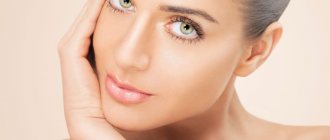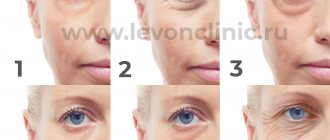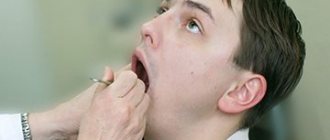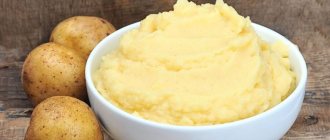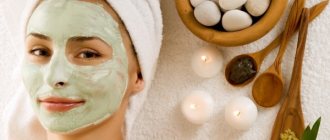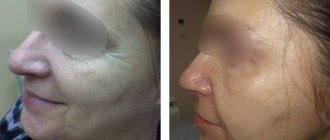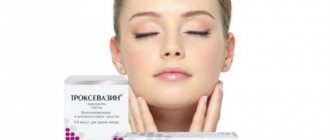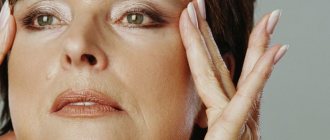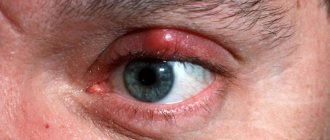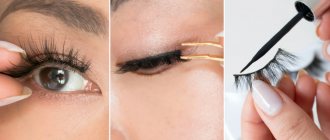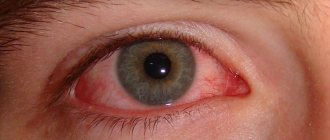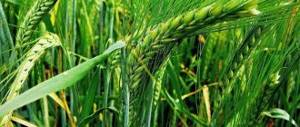Dermatological problems are more common among teenagers. But such a statement is wrong. The adult population also faces various types of dermatological pathologies - pimples, blackheads, boils. And one such type of skin problem is milia. They are small whitish pimples without signs of purulent or inflammatory nature, accumulating mainly in the area of the lower or upper eyelids.
Milia - what is it?
Whiteheads appear when it is impossible for sebum and horny formations to reach the surface of the epidermis. There appears to be a small bump under the skin with a white or yellowish head.
As long as the ducts remain blocked, there is no inflammation within the milia. When squeezing out whiteheads, an infection can get inside, suppuration develops, and redness appears.
Some facts:
- size of formations – 2–3 mm;
- location - single or group;
- pain, burning – absent.
Locations:
- whiskey;
- cheeks;
- area around the eyes;
- wings of the nose - less often.
Varieties:
- primary - appear spontaneously, under the influence of certain factors, for example, improper care of the skin or exposure to UV rays;
- secondary (clinical) occur in scars after trauma to the skin or after the subsidence of the inflammatory process.
Note! Milia are much more common in women.
What is millet
Such defects can be observed in infants, but more often occur in adolescence and sometimes in adults.
The opinions of experts differ - some believe that the formation of milia does not depend on gender and age, while others are confident that girls and young women are most susceptible .
The rash develops quite slowly and gradually, without causing any specific sensations.
Whiteheads are dense, nodular subcutaneous formations of white or yellowish color that have clear outlines and rise slightly above the surface of the skin.
The sizes of milia range from 0.5 to 3 mm in diameter , they are located singly or in groups, but almost never merge.
If the pimples are located very close to each other, the skin becomes rougher and numerous grooves appear separating the individual nodules.
Pathological formations can disappear on their own within a few months due to the natural change of layers of the dermis, but in most cases they persist for several years.
Causes
There are many provoking factors:
- passion for cosmetics that clog the ducts of the sebaceous glands. A thick layer of powder or foundation does no good;
- excessive secretion of sebum;
- improper functioning of the liver, pancreas, and gastrointestinal tract;
- excessive consumption of fatty, salty, smoked, sweet foods;
- long stays on the beach, frequent visits to the solarium;
- hormonal changes during puberty;
- accumulation of toxins in the body;
- excessive dryness of the skin;
- alcohol abuse, smoking;
- poor skin hygiene.
We offer you to read an interesting article about the properties and use of tar soap for acne and other troubles.
At this address you can learn how to remove hair dye from your hands and other areas of the body.
A white pimple appears on the eyelid - what is it?
The shape of the millet resembles small inclusions, which are located on delicate areas of the skin - near the eyes, eyelids, on the lips. The structure of the formations is compacted, and their color is white.
Despite the fact that they are outwardly quite harmless, in fact, millet grasses are not so safe for human health and life. Milia are formed as a result of impaired excretory function of the sebaceous glands of the skin, as well as due to clogging of pores with keratinized particles of the epidermis.
Interesting fact:
When the sebaceous glands function normally, excess fat comes out; when the process is disrupted, the follicles are enveloped in sebaceous fat and whiteheads form.
In fact, there are many different reasons why grasses form, but most often it is:
- hormonal disorders;
- disorders and pathologies of the nervous system;
- reaction of the skin and small glands to hormonal changes;
- diseases of the gastrointestinal tract;
- poor nutrition and consumption of unhealthy foods - fast food, chips, sugary drinks, etc.;
- lack of vitamins and other useful elements;
- hereditary factor;
- poorly selected care products or insufficient hygiene.
With the correct determination of the main root cause, we can talk about effective therapy and results. To accurately find the provoking factor, it is recommended to seek help from a specialist - a cosmetologist or dermatologist.
After an accurate diagnosis and a series of studies, treatment is prescribed, which is completely individual, depending on the current situation.
How to get rid of whiteheads
The main rule that everyone needs to remember: it is forbidden to squeeze out whiteheads yourself. The formations are protected by a dense layer of skin; there is no infection or pus inside.
Violation of the integrity of the skin without complying with antiseptic requirements will provoke an inflammatory process. Only a specialist in a beauty salon or medical facility can get rid of whiteheads and correctly “get” the contents of the milium.
Main methods of treatment:
- mechanical removal of milia;
- hardware cosmetology;
- traditional medicine recipes.
Important! If millet appears, visit a dermatologist. The doctor will find out the cause of whiteheads and recommend a removal method. Perhaps folk recipes will help you. In advanced cases, you cannot do without the help of a competent cosmetologist.
How to get rid of milia? You already know that you shouldn’t try to squeeze out whiteheads on your own. Visit a cosmetology clinic, a specialist will carry out the procedure in compliance with all the rules.
Clinical picture
In accordance with the results of histological studies, it was found that milia, or retention cysts, are located in the skin separately from the sebaceous glands, sweat ducts and hair follicles.
They are a cystic wall lined with epithelial tissue cells.
The capsule of the cystic formation contains onion-shaped layered keratin accumulations, or keratinized epithelial cells. Although fat can be mixed in small quantities into the total mass, contrary to the opinion of many ordinary people, milia do not consist of the secretion of the sebaceous gland.
So, milia are epidermal cysts, which are bubbles formed in the superficial layer of the dermis that contain keratin.
Presumably they arise due to hyperkeratosis, during which accelerated cell division occurs in the upper epidermal layer while the rate of exfoliation decreases.
This may explain the reason for the impossibility of removing milia with the same means that are successfully used in the fight against acne and other types of acne.
Attempts to squeeze out the grass remain unsuccessful even under strong pressure.
Sometimes, as a result of puncturing the cyst, a small amount of white or yellowish content of a soft or gelatinous consistency may be released.
Mechanical removal
Stages:
- the cosmetologist thoroughly cleans and disinfects the epidermis;
- A puncture is made with a thin sterile needle, through which the contents of the sago node are removed;
- the wound on the skin is small, no traces remain after healing;
- The specialist treats the skin with a disinfectant composition and gives recommendations for further skin care.
Important! During one session, no more than 10 formations are removed. This ensures minimal trauma to the epidermis and does not disrupt the functioning of the sebaceous glands.
Hardware cosmetology
Which method of combating millet grass should I choose? The decision is made by the doctor of the cosmetology clinic after meeting the patient and his medical history.
Taken into account:
- health status;
- number of milia;
- affected area;
- presence or absence of contraindications.
Laser coagulation
This proven method is suitable for most patients with whiteheads on the face. Laser cauterization gives good results and is often used to get rid of grass.
After treatment with a beam, the location of the milium becomes covered with a crust. After a couple of weeks, it disappears and the treated areas heal. At home, the patient should lubricate the crusts with disinfectant compounds.
Electrocoagulation
A popular way to combat milia. Instead of a laser beam, high frequency alternating current is used. The effectiveness of the method is confirmed by positive reviews from doctors and patients. After the procedure, the crust disappears quickly enough, there are no traces.
Corsetage
This method is considered outdated and is rarely used. After treatment, whiteheads are scraped out with a special device that resembles a spoon.
The method is quite traumatic. After the session, scars remain on the skin that are difficult to treat.
Treatment methods
If milia become a real problem, then you should not try to solve it yourself - all cosmetologists and dermatologists are convinced of this. Self-removal can lead to serious complications. Moreover, traditional therapy methods will not get rid of cysts.
Removal of dermatological problems is carried out only in specialized institutions by qualified dermatologists or cosmetologists.
The following methods are used to remove milia:
- mechanical method;
- curettage;
- electrocoagulation;
- laser therapy.
Mechanical method
The most common method of getting rid of milia is mechanical cleaning. Its meaning lies in cleansing, disinfecting the skin and subsequent removal of the tumor.
The procedure is performed by a qualified cosmetologist in beauty salons. Almost all beauty salons these days offer the corresponding service, which is painless and does not provoke any complications.
The duration of the procedure depends on the number of tumors. Simultaneous removal of more than 10 milia on the face is not allowed. This is necessary in order not to disrupt the functionality of the sebaceous glands.
After the procedure, small wounds remain on the surface of the skin. With proper care, wounds heal quickly and leave no visible defects.
After removal of milia, a cosmetologist gives advice on skin care. The basis of care includes the use of high-quality cosmetics aimed at normalizing the activity of the sebaceous glands.
A proper diet is a mandatory basis for subsequent prevention of the appearance of tumors. The menu should contain healthy foods containing large amounts of vitamins (especially A) and minerals.
You should not try to remove tumors on your own. Squeezing, puncturing or cutting cysts is strictly prohibited. Self-therapy often causes negative consequences, including the appearance of scars and infection under the skin.
Curettage
The method is similar to mechanical cleaning. The difference is that a special tool is used to remove milia - a curette. Its shape resembles a small spoon, which is used to “scrape out” the tumor.
Curettage is recognized as a less effective way to treat milia. The disadvantage of the technique is that after the procedure scars remain, which must heal and often subsequently “turn” into pigment spots.
Electrocoagulation
The coagulation method is actively used in cosmetology to remove papillomas, condylomas, acne, and milia. The procedure is a surgical intervention performed according to the following scheme:
- Treating the affected skin with an antiseptic.
- Destruction of the milium with a special device (when exposed to direct or alternating current, the structure of the neoplasm is destroyed).
In beauty salons, special devices are used for removal - monopolar or bipolar electrodes, shaped like a needle. To remove large or numerous milia, your doctor may use a loop-shaped electrode.
After electrocoagulation, a scab consisting of particles of dead tissue remains. Over time, the scabby crust falls off and a pink spot forms in its place, which subsequently turns white and takes on the color of the skin.
The advantage of the technique is the absence of damage to the skin tissues adjacent to the tumor. After the procedure, active regeneration of damaged tissue begins.
The recovery period after electrocoagulation includes careful skin care, this will help avoid the process of suppuration at the scar site.
Important points:
- You cannot remove the crust that has formed after the procedure yourself, since in this case a scar or scar will remain in its place;
- healing of damaged skin after electrocoagulation lasts approximately 10-12 days;
- on the 6-8th day the scab comes off on its own;
- After this, the skin must be provided with proper care, the basics of which are prescribed by a doctor.
Electrocoagulation is a popular procedure. It rarely causes complications or negative consequences. The duration of the procedure depends on the number of milia removed. Patients tolerate the procedure well; it does not cause pain (a slight tingling sensation is possible, which is normal).
Compared to laser therapy, electrocoagulation is several times cheaper.
Laser therapy
A special laser device removes various types of dermatological problems - papillomas, acne, pigment spots, large tumors, milia. The procedure is carried out in specialized cosmetology rooms under the guidance of a professional dermatologist.
In most cases, laser therapy is used when tumors cannot be removed either by independent methods or by mechanical action. The laser is able to eliminate the main dermatological problem and at the same time correct the defects of previously used techniques.
There are 3 types of laser used to treat dermatological problems. The choice of the most optimal one depends on the tumor, the complexity of the procedure and the physiological characteristics of the patient.
- Neodymium. The function of the laser is a thermal effect on the cells of the sebaceous glands and restoration of their functionality. The device operates in a non-contact manner. The laser has the ability to destroy pathogenic microorganisms, bacteria, fungi accumulated on the surface of the skin and in the upper layer of the epidermis. The laser accelerates the regeneration of injured cells. Removing milia with a neodymium laser has no side effects.
- Erbium. The use of this device is effective if neoplasms on the face are numerous or advanced. During laser therapy, skin resurfacing occurs. The laser has a therapeutic effect on the upper layers of the epidermis, stimulating the formation of healthy cells. The advantages of an erbium laser are the destruction of infectious and fungal processes, cleansing the epidermis of pathogenic microorganisms, smoothing the surface of the skin, and providing stable prevention of the formation of dermatological problems.
- Alexandrite. This type of laser is used to remove milia, acne, warts and some other dermatological formations. The alexandrite laser is also used to remove unnecessary hairs on the face. The laser has a powerful effect on the structure of the tumor, destroying it and ensuring the prevention of subsequent development.
The essence of therapy is the effect of a laser beam on the tumor (in the case of electrocoagulation, electric current is applied). During laser therapy, the core of the milia is destroyed and subsequently removed.
Progress of the procedure
- Treatment of the skin surface with an antiseptic;
- impact of a laser device on neoplasms;
- mechanical removal of purulent contents from large tumors;
- facial treatment with an anti-inflammatory agent.
The procedure is absolutely painless for the patient. There may be a slight tingling sensation on the skin, but this is normal. The duration of laser therapy is about 40 minutes.
After the procedure, a dark crust forms on the affected area. It peels off on its own after 5-7 days. Complete healing of the skin occurs after 2 weeks.
During the recovery period, it is important to provide the skin with proper care. At this time, you cannot use cosmetics (foundation, etc.). The doctor may prescribe special medications to the patient to help speed up the process of tissue regeneration.
Contraindications:
- herpes virus infection;
- diabetes;
- pathological disorders of the functionality of the endocrine system;
- pregnancy period;
- lactation period;
- cancer;
- traumatic damage to the milia;
- inflammatory diseases (increased body temperature).
Homemade ways to combat millet grass
You can overcome whiteheads using traditional methods, but this process is lengthy. Masks and compresses regulate the functioning of the sebaceous glands, clean clogged ducts, and dissolve old plugs.
If you don't want to go to a beauty salon or a specialist clinic, try proven home remedies for treating milia on the face. Get ready for long-term treatment and positive results.
Yeast mask
The composition will reduce the amount of secretions from the sebaceous glands and dissolve excess secretion in the pores. Connect 1 dec. l. fresh yeast, 1 tbsp. l. lemon juice, 3% hydrogen peroxide, liquid honey. Place the mixture in a warm place for 10 minutes.
Apply it to your face. After 15 minutes, rinse off the dried mass with warm water. Be sure to apply a light cream.
Soda peeling
The product is suitable for people with oily epidermis. Lather baby soap, add 1 tbsp. l. baking soda.
Using circular movements without strong pressure, wipe the affected areas with soap and soda foam, and wash thoroughly. The skin may become red. After a couple of days, the irritation should go away.
Pumpkin mask
Grate the ripe pumpkin on a fine grater, add sour cream. Make sure the mass is thick enough. The duration of the procedure is a quarter of an hour.
Calendula or chamomile compress
Disinfectant composition with natural ingredients is suitable for daily use. Pour a glass of boiling water over 1 tbsp. l. dry raw materials. The infusion is ready in 40 minutes.
Soak the gauze in the healing liquid and place it on the areas covered with milia. Keep the compress for 20–25 minutes. You can alternate treatments with chamomile and calendula.
Paraffin mask
The method deeply cleanses pores and pulls out plugs. Melt 70 g of white paraffin in a water bath. Before applying paraffin, clean your face with an alcohol-based product. Water-based compounds are prohibited!
Place several layers of warm mass on your face, waiting for each layer to harden. After cooling, carefully remove the mask.
Cleansing mixture with fresh viburnum
Mash the ripe berries and squeeze out the juice. Add a little oatmeal to prevent the mixture from spreading. Steam, clean the epidermis, apply the viburnum mixture to areas affected by millet. Keep the mask on for 15–20 minutes.
Salt peeling
The product is suitable for different skin types. The base is sea salt. For sensitive skin, the second component will be olive or almond oil, for oily skin - sour cream.
Mix the ingredients, use a cotton swab dipped in the mixture to treat the white bumps. Rub the salt scrub slowly, without strong pressure. Wash your face and cover your face with moisturizer.
Find out details about using wheat germ oil for stretch marks on the body.
What are the benefits of flaxseed oil? Read the answer on this page.
Follow the link and read the information on how to do facial exercises for wrinkles.
Video: Causes of appearance on the face
In the video - removal of milia on the face:
The procedure for removing whiteheads at home is carried out as follows: the skin formation must be pierced with a needle and the contents squeezed out. But it is not always possible to carry out manipulation at home, since sometimes milia are located deep in the subcutaneous layers.
What causes internal acne on the face can be found in this article.
Traditional medicine is also rich in recipes that used to help people treat and get rid of this problem:
- Viburnum juice . To prepare the composition, you need to take the berries and crush them using a wooden pestle. Pour the resulting juice into another container. You can use the juice as a preventive measure or apply gauze soaked in it to eliminate existing skin formations. You can also prepare an effective mask by mixing juice and oatmeal. As a result, you should get a creamy mass. It is applied to the affected area and kept there for 45 minutes.
- Cucumber juice . To combat millet weeds, you can use fresh cucumber. Remove the peel and seeds from it. After this, take the pulp and finely chop or grate. Pour water over the pulp, wait 4 hours, and then apply to the affected area and hold for 30 minutes.
How to cleanse your face from acne at home?
Here you will find reviews and a recipe for homemade chocolate wrap.
Masks with a lifting effect at home: .
Milia in children
Sometimes white subcutaneous bumps appear in newborns and small children. Parents are frightened by these strange, unpleasant-looking formations.
Do not panic! If the size of the formations does not exceed 3 mm, they do not itch, then most likely it is millet grass.
Locations:
- various parts of the body, from the scalp to the lower extremities;
- sometimes white bumps appear on the hard palate, the inner surface of the lips.
Causes:
- imperfection of digestive processes;
- weak gastrointestinal tract;
- Features of hormonal levels in the first months of life.
According to most pediatricians, millet does not pose a threat to the tiny organism. Infections and diseases of internal organs do not cause this temporary cosmetic defect.
No special treatment required! Squeezing out formations is strictly prohibited!
Important! Gradually the whiteheads will go away. Children do not have any marks on their skin after milling.
